Brigitte Aflalo-Calderon
Your education: No academic training in art. I studied political science and writing for children’s and travel magazines. I was a journalist and wrote for children’s and travel magazines.
Describe your art in three words: colorful, bold, instinctive.
Your discipline: Collage, digital art, abstract expressionism.
www.brigitteaflalo.com | Instagram
Your use of vibrant colors is quite striking. How do your Moroccan roots influence your color palette?
I feel very lucky to have grown up in Morocco, a land of colors, as it is often described. From the seashores, the desert to the mountains, red, blue, green, ochre and orange colors explode in a thousand hues. Today, they are present in my art as they were formerly in my everyday life – the garden of my home where flowers abounded, the market with stalls overflowing with fruits and, vegetables, the streets lined with orange trees under the bluest sky. And there were the scents – the intoxicating scents of orange-flowers and mint leaves- the sounds of drums and the chants of women and men…These sensory experiences make me who I am and find a place in my art. As a matter of fact, I always begin a creative work, be it a painting on canvas or a collage, with a color in mind.
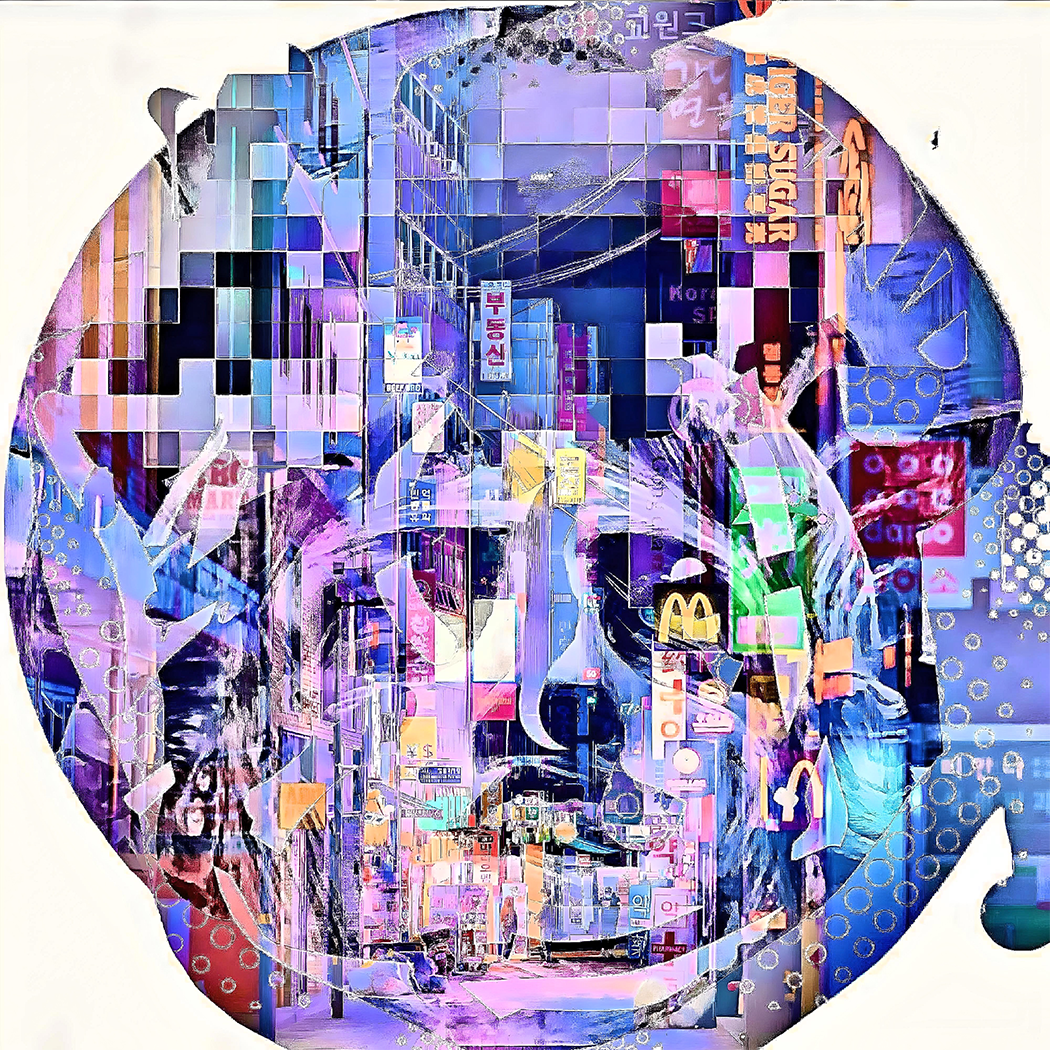 Brigitte Aflalo-Calderon | Lady Liberty | 2024
Brigitte Aflalo-Calderon | Lady Liberty | 2024
How did you move from painting to collage and digital work?
I like to experiment with different media and objects. Gradually, I added collages and various materials to my paintings – cut out images, lace, pieces of my husband’s faded shirts, pictures from old schoolbooks, newspapers, photos, etc… Eventually, collages became my main creative outlet. When you create a collage, you cut, glue, scratch, tear apart, re-cut, paste, discard, start again. To me making collages is about constructing, deconstructing and reconstructing something with fragments of different things. A bit like my dual and now triple (as I split my time between the US and France) identities.
In the recent years, I began digitalizing my work. I like to see my work go in directions that I had not suspected existed. Manipulating digitally adds an extra layer to my pieces. First, I take a photo of the painting or collage that I have chosen to work on. I digitalize this photo on my computer, which allows me to manipulate both forms and colors. So I will create a dominant image that exists in various iterations.
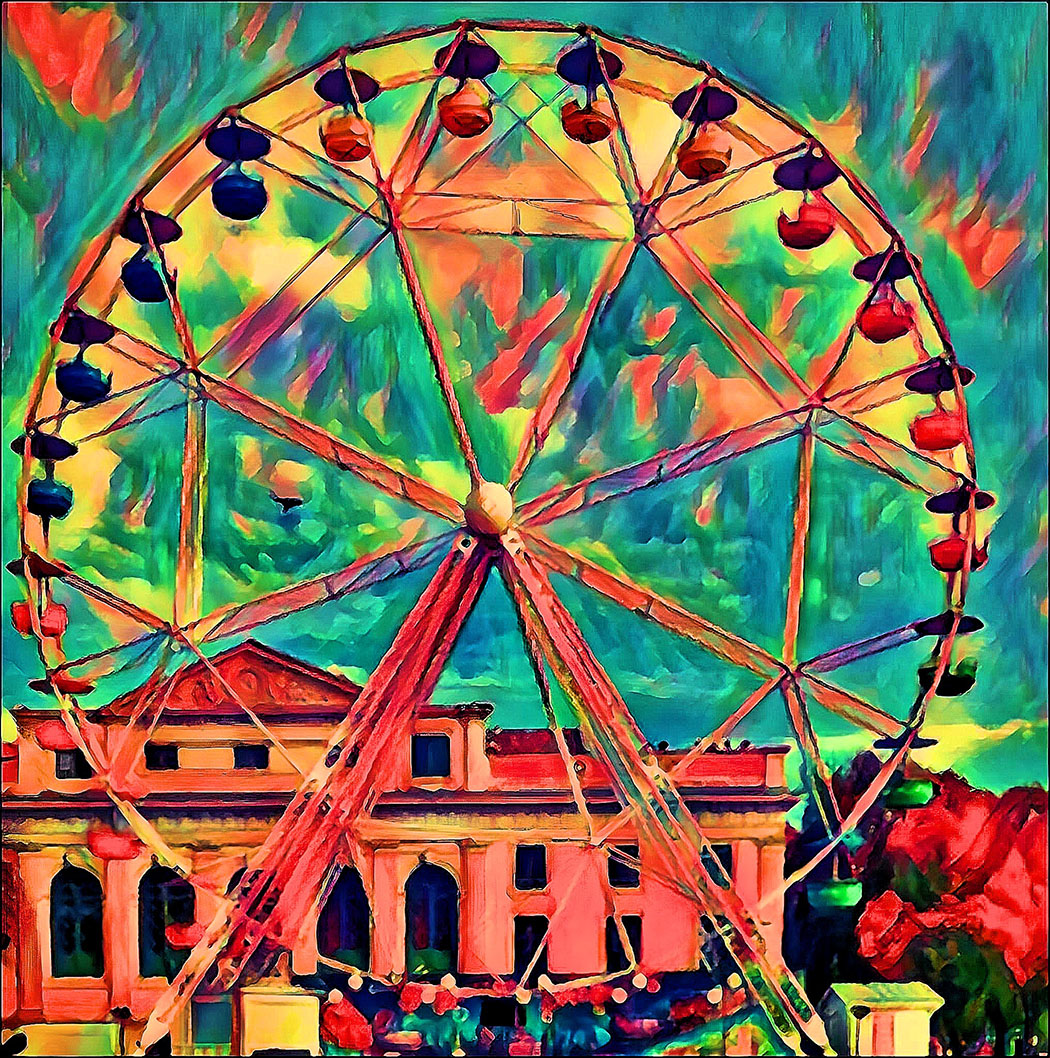 Brigitte Aflalo-Calderon | Turn Turn Turn | 2024
Brigitte Aflalo-Calderon | Turn Turn Turn | 2024
How do you select the various objects, cut-outs, and materials that you incorporate into your mixed media pieces?
It is both a matter of instinct and having a conversation with the materials. I don’t anticipate what I am going to do. Over the years I have been accumulating a library of materials organized by categories including colors, fabrics, photos, postcards, etc. I begin by picking out one or several objects that suggest a story that I want to tell. Next, I build and rebuild until a shape or shapes appear and the narrative I am looking for unfolds.
Can you discuss a particular piece that holds significant meaning to you?
The second piece I ever created eight years ago, means a lot to me. It is absolutely and inevitably about Morocco. It is called ‘Hammam.” I had not planned it. I was just a beginner and had no clue as to where I was going except that I was attracted to a palette or red hues. So I began making marks on a canvas with wide brush strokes. While the paints were still wet, I carved lines. A face appeared, then another one and another one. The painting represents women sitting together in a half-circle. Which is often what happens in a Hammam in Morocco. When my brother saw it, he immediately bought it because to him too it evoked Morocco. I am glad that it remains in our family. Each time I see the painting, I stop to look at it. It brings me back home.
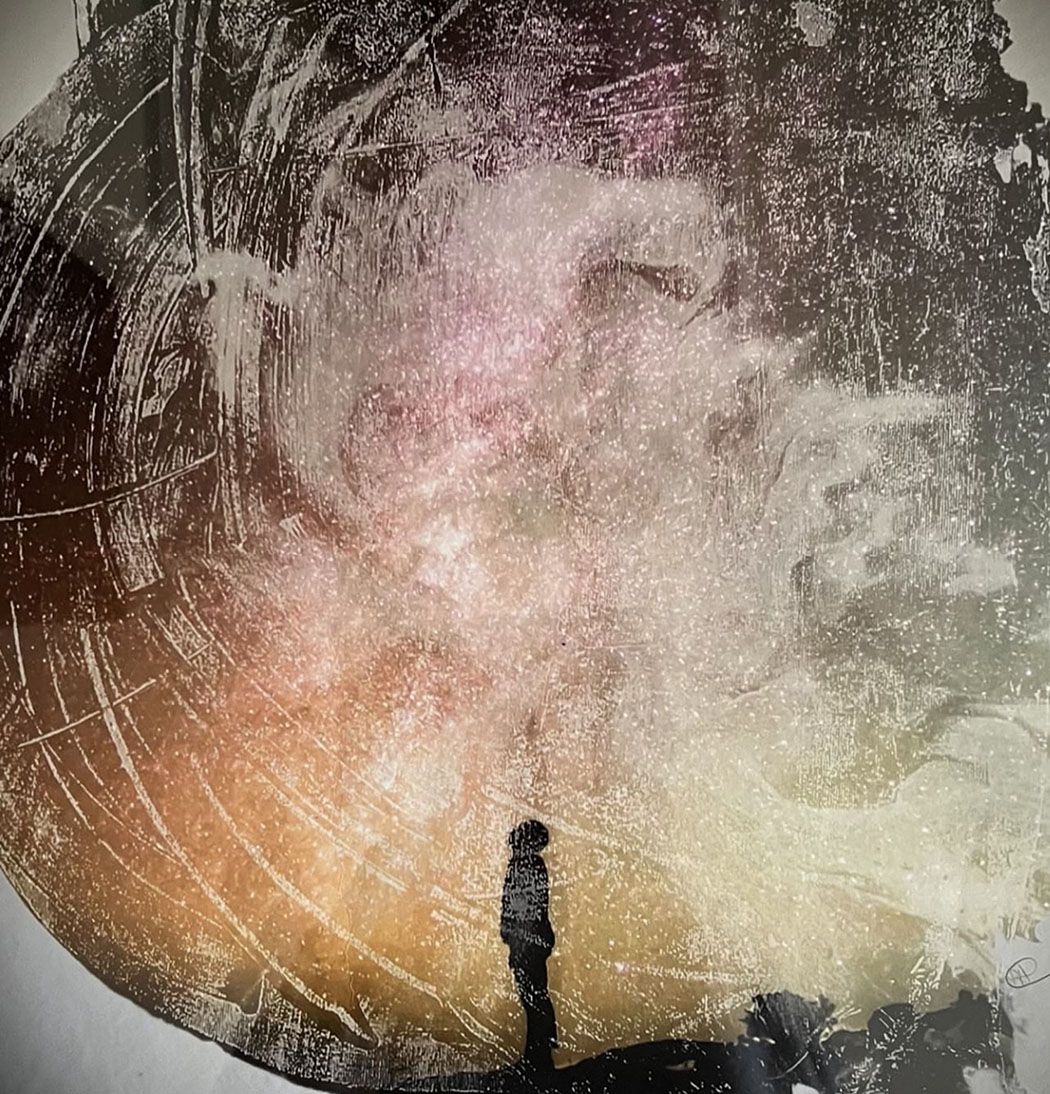 Brigitte Aflalo-Calderon | Contemplating Eternity | 2023
Brigitte Aflalo-Calderon | Contemplating Eternity | 2023
What are some of the most memorable reactions or feedback you’ve received from viewers of your art?
The most memorable comment I received was from an internationally renown French painter who exhibits worldwide. He looked at one of my paintings, nodded in appreciation and said, this is good, this is really good. I was ecstatic. You always need encouragement. Viewers often comment on the intense and vibrant colors of my palette, as well as the somewhat unusual combination of colors.
What advice would you give to aspiring mixed media and digital artists?
I would tell them to find a mentor. I have two mentors, one in France and one in the US. It is a privilege to be guided by experienced artists. I would also tell them to join a community of artists. Being an artist can feel lonely. It is necessary to go out there, share ideas, show your art and receive criticism with an open mind.
Can you tell us about your journey as an artist and how your dual identities of Morocco and the USA influence your work?
My journey as an artist started eight years ago when I turned 60. I have not stopped doing art since. In 2016, I was in Nimes, a city in the south of France where I choose to live part of the year. I saw an ad on an art gallery’s window announcing the start of art classes. I walked in on an impulse. To make a long story short, the morning after I was sitting by an easel embarking on my journey as an artist. The gallery owner and teacher, who eventually became my mentor and close friend did not tell me what to paint. She asked me to look around at the art pieces on the walls, choose one that spoke to me and then sit down and start painting. My first work was an abstract painting filled with colors. I had Jean-Michel Basquiat on my mind, one of the artists I most admire.
Making art has become my home. Once you leave home, the place where your history began — Morocco in my case –you lose forever a sense of safety. You don’t find it anywhere else. Although I have now spent most of my life in the US, I have not experienced a feeling of belonging. Through my art, I am building a world that I belong to. A blank sheet of paper or canvas is an invitation to converse intimately with colors, shapes, patterns, cut-out images or any material that captures my imagination at that moment. This is where my dual identities of Moroccan and North American cultures express themselves in one voice.
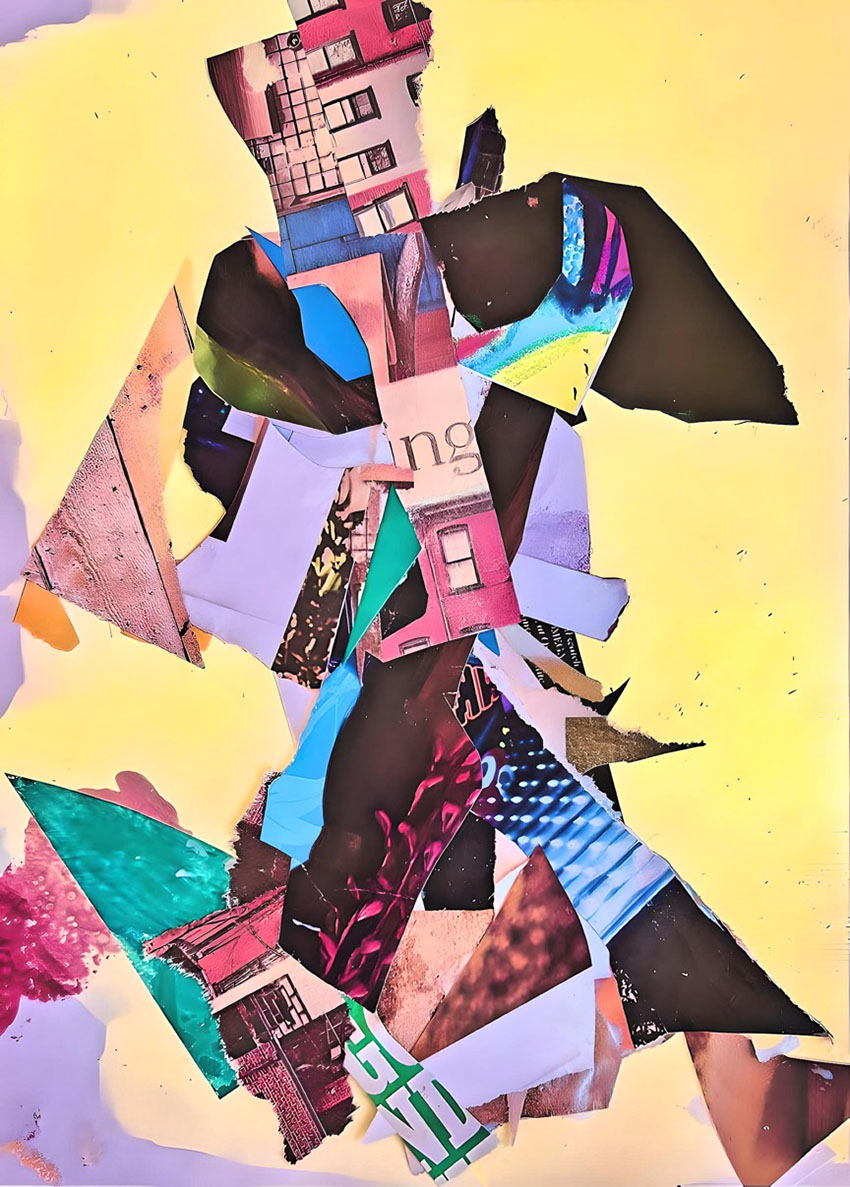 Brigitte Aflalo-Calderon | On the run | 2023
Brigitte Aflalo-Calderon | On the run | 2023

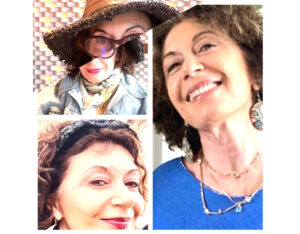
Jennifer Wild
Fabulous article! Brigitte is a very talented creator! I look forward to seeing her star continue to rise.